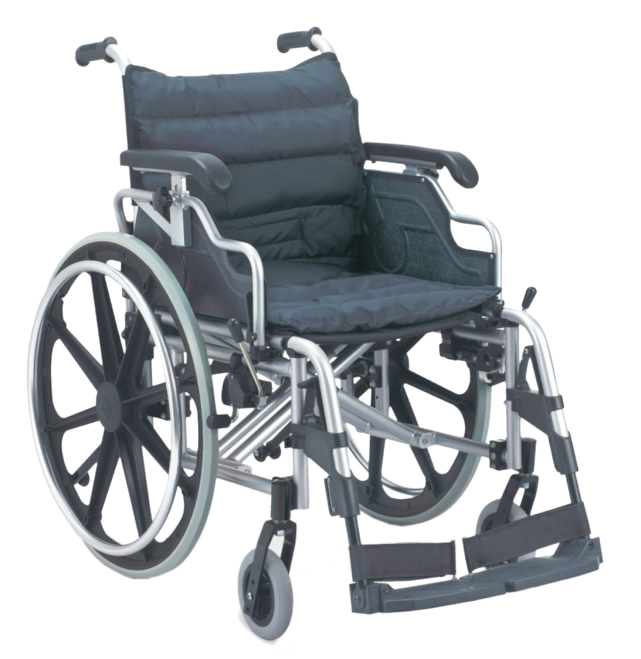
Aluminum Wheelchair
The discovery of aluminum changed the wheelchair industry forever. With its light weight and durability, aluminum has become the material of choice for wheelchair manufacturers. Today, there are many different types of aluminum wheelchairs on the market, each with its own unique features. Whether you need a lightweight chair for easy transport or a heavy-duty chair for everyday use, there is an aluminum wheelchair that will meet your needs.
Aluminum chair frame, flip-up & height- adjusted desk armrest, detachable footrest, solid castor, quick release PU mag wheel, with anti wheel, adjustable footplate.
| Ref. No.: | NW GW |
||||||||||
|---|---|---|---|---|---|---|---|---|---|---|---|
| NMW1950LBPQ | 67 | 46 | 61 | 15 | 50 | 91 | 100 | 83x33x93 | 16.7 19.1 | 92 | 224 |
The wheelchair industry has seen many changes over the years, but one of the most significant changes came about with the discovery of aluminum. Aluminum is a lightweight metal that can be used to create strong and durable wheelchair parts. This made it possible for wheelchair manufacturers to create lighter and more comfortable wheelchairs that were easier for users to maneuver. The discovery of aluminum changed the wheelchair industry forever and has helped make life easier for people with mobility impairments. If you are in need of a new wheelchair or are looking for ways to make your existing wheelchair more comfortable, be sure to look for models that feature aluminum components.
Than the iron that was commonly used. This made it much easier for users to self-propel or be pushed by someone else. The lighter weight also made it possible to produce sport wheelchairs that could be easily transported to events. There are several disadvantages to using aluminum in wheelchairs. One is that it is not as durable as other materials, so it may not last as long. Aluminum also corrodes more easily than other materials, so it may need to be regularly serviced or replaced. Finally, aluminum is a conductive material, so it can become very cold in winter weather and cause discomfort for users.
The pros of aluminum are that it is a very strong metal, yet lightweight. This makes it ideal for wheelchair construction as it can support a lot of weight without being too heavy to maneuver. Additionally, aluminum is very corrosion-resistant, meaning that wheelchairs made from this material will last longer. The cons of aluminum are that it is not as flexible as some other metals, so it may not be as comfortable for some users. Additionally, because it is such a good conductor of heat, aluminum wheelchair users may find that their chairs get uncomfortably hot in summer weather.
Aluminum has been a metal that has changed the world in many ways. One of those ways is how it has affected the wheelchair industry. Aluminum has made wheelchairs much lighter, more durable, and more comfortable. This has allowed people with disabilities to live fuller and more active lives. The discovery of aluminum changed the wheelchair industry forever because it allowed people with disabilities to have better quality of life. It made wheelchairs lighter so they could be easily transported and more comfortable to sit in for long periods of time. Aluminum also made wheelchairs more durable so they could withstand everyday use.